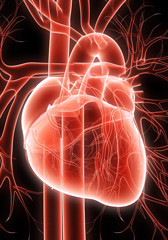Chelation therapy offers small, if any, benefit for heart disease

ARCHIVED CONTENT: As a service to our readers, Harvard Health Publishing provides access to our library of archived content. Please note the date each article was posted or last reviewed. No content on this site, regardless of date, should ever be used as a substitute for direct medical advice from your doctor or other qualified clinician.
“Is Heavy Metal Holding You Back?” So asks an online ad for a wellness clinic offering chelation therapy—an alternative treatment touted to cure heart disease and other ailments. Chelation therapy removes metals that have built up in the body. Its proponents claim that this can rejuvenate the heart and blood vessels, improve liver and kidney function, increase blood flow to the brain, and more.
Chelation therapy is an FDA-approved therapy—for treating mercury, lead, and other types of heavy-metal poisoning, as well as for iron overload (hemochromatosis) and some types of anemia. A chelating agent infused into the bloodstream binds to these toxins. The kidneys filter out the chelating agent and bound metals, which are then urinated away.
How might chelation therapy work for heart disease? The theory is that the chelating agent (usually ethylenediaminetetraacetic acid [EDTA]) binds to calcium in fatty plaques lining arteries. When it pulls out the calcium, plaque is supposedly swept away too, clearing arteries in much the same way that a drain cleaner opens clogged pipes. It’s a wonderful analogy, but one that hasn’t been backed by solid science.
Questioning TACT
Whether chelation therapy actually works for heart disease was the focus of the 10-year, $31 million Trial to Assess Chelation Therapy (TACT) funded by the National Institutes of Health. The TACT results appear in tomorrow’s JAMA. The trial, which included only people who’d had heart attacks, found that chelation therapy slightly reduced the risk of heart problems—especially the need for bypass procedures. A home run for chelation therapy? Not according to the three top editors at JAMA. In an unusual editorial accompanying the TACT paper, the editors say that the results “should serve to dissuade responsible practitioners from providing or recommending chelation therapy for patients with coronary disease and should discourage patients with previous MI [heart attack] from seeking this therapy with the hope of preventing subsequent cardiovascular events.”
In fact, the TACT has been embroiled in controversy since it was proposed. It has been challenged on grounds ranging from possible ethics violations to the safety of the chemicals used in the research. Even experts who haven’t quarreled with the study’s methods question the meaning of its results.
“The reason why we’re so uncertain about what to conclude is this chelation mixture had many components to it. It wasn’t just chelating agents,” says Dr. Elliott Antman, professor of medicine and Associate Dean for Clinical/Translational Research at Harvard Medical School. In addition to the main chelating chemical, EDTA, the infused solution contained vitamins, magnesium chloride, potassium chloride, and a cocktail of other ingredients. “We don’t know which of these components is contributing to the results,” he says.
Also unclear is why the benefit from chelation therapy was almost exclusively confined to people with diabetes. The combined uncertainties surrounding this trial make it too tenuous to use for making heart disease treatment recommendations. “On the basis of this trial, we do not feel that chelation therapy is ready for clinical use,” Dr. Antman adds.
Costs—and risks
More than 100,000 Americans with heart disease use chelation therapy each year, no doubt drawn by the health claims made by its practitioners. Yet this treatment doesn’t come cheap—or without safety risks.
Each treatment costs $75 to $125, and people often undergo dozens of these three-hour-long infusions over a period of several months. All in all, a treatment course can exceed $5,000—and it isn’t typically covered by health insurance. That would be money well spent if it truly prevented heart attacks and strokes. But neither TACT nor prior studies suggest that’s the case.
Then there are the side effects, which can range from headaches to a drop in calcium and blood pressure levels. In rare cases, people who’ve undergone chelation therapy have been left with permanent kidney damage.
“We don’t know what the implications of chelation are in a person who has a normal heavy metal balance in the body, and whether we are potentially shifting something in a way that might be harmful,” Dr. Antman says.
No substitute for healthy living
When it comes to heart disease, no treatment—whether it comes in a pill, surgical procedure, or infusion—takes the place of healthy living. “One of the things that’s most concerning here is that individuals rely on chelation therapy instead of adhering to evidence-based recommendations,” Dr. Antman stresses.
Those recommendations are encapsulated in “Life’s Simple 7,” seven lifestyle changes from the American Heart Association that have been proven to improve heart health:
- Get active
- Control cholesterol
- Eat better
- Manage blood pressure
- Lose weight
- Reduce blood sugar
- Don’t smoke
“It doesn’t have to be hard,” Dr. Antman says. “It’s a commitment over the life term to live a heart-healthy lifestyle.”
About the Author

Stephanie Watson, Former Executive Editor, Harvard Women's Health Watch
Disclaimer:
As a service to our readers, Harvard Health Publishing provides access to our library of archived content. Please note the date of last review or update on all articles.
No content on this site, regardless of date, should ever be used as a substitute for direct medical advice from your doctor or other qualified clinician.












